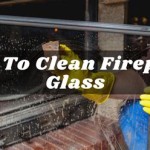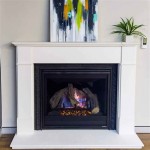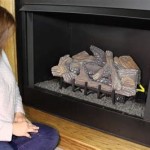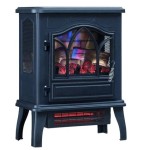Selecting and Applying Paint for a Fireplace Hearth
The fireplace hearth, a noncombustible floor area extending from the fireplace opening, serves a crucial function in protecting the home from stray embers and radiating heat. While often constructed from materials like brick, stone, or tile, the hearth can become worn, faded, or simply outdated in appearance. Painting the hearth offers a relatively inexpensive and effective way to update its aesthetic and integrate it more seamlessly with the surrounding décor. However, selecting the correct type of paint and applying it properly are paramount to ensuring both the longevity of the finish and the safety of the home.
The primary consideration when choosing paint for a fireplace hearth is its heat resistance. Standard interior or exterior paints are not suitable, as they are not formulated to withstand the high temperatures generated by a fireplace. Using the wrong type of paint can lead to blistering, peeling, cracking, and the release of harmful fumes when exposed to heat. Furthermore, certain paints may be flammable, posing a significant fire hazard. Therefore, the selection process must prioritize paints specifically designed for high-temperature environments.
Several types of paint are appropriate for fireplace hearth applications, each with its own characteristics and ideal use cases. These include high-heat paints, masonry paints, and specialized fireplace paints. Thorough research and careful consideration of the hearth's material, its proximity to the firebox, and the desired aesthetic are essential before making a final decision. Understanding the properties and application requirements of each paint type is crucial for achieving a durable and visually appealing result.
Before commencing any painting project, proper preparation is essential. This includes cleaning the hearth surface thoroughly, repairing any cracks or damage, and applying a suitable primer. Skipping these steps can compromise the adhesion of the paint and lead to premature failure of the finish. Furthermore, ensuring adequate ventilation and wearing appropriate safety gear are vital for protecting oneself from dust, fumes, and potential skin irritation. The preparation phase lays the foundation for a successful and long-lasting paint job.
Understanding High-Heat Paints
High-heat paints, also known as stove paints or engine paints, are specifically formulated to withstand extremely high temperatures, typically ranging from 500°F to 1200°F or higher. These paints are commonly used on stoves, grills, engine blocks, and other surfaces subjected to intense heat. They are often available in aerosol cans for easy application, and they come in a variety of colors and finishes, including matte, satin, and gloss. The key to their heat resistance lies in their unique formulation, which includes specialized resins and pigments that prevent breakdown and discoloration at elevated temperatures.
The application of high-heat paint typically requires a clean, dry, and properly prepared surface. Loose rust, scale, or old paint must be removed using a wire brush, sandpaper, or other abrasive tools. The surface should then be degreased with a solvent cleaner to ensure optimal adhesion. Multiple thin coats of paint are usually recommended, allowing each coat to dry completely before applying the next. Following the manufacturer's instructions regarding drying times, application techniques, and curing procedures is essential for achieving the best results.
While high-heat paints offer excellent heat resistance, they may not be as durable as other types of paint in terms of scratch resistance and abrasion resistance. Therefore, they are best suited for hearths that are not subject to heavy foot traffic or frequent contact with abrasive objects. Careful handling and maintenance are necessary to preserve the appearance and integrity of the finish. Regular cleaning with a soft cloth and mild detergent can help to remove dust and grime without damaging the painted surface.
The selection of a high-heat paint should be based on the maximum temperature expected on the hearth surface. If the hearth is located very close to the firebox, a paint with a higher temperature rating may be necessary. It is also important to consider the aesthetic qualities of the paint, such as its color, finish, and texture. Choosing a paint that complements the surrounding décor can enhance the overall appearance of the fireplace area.
Exploring Masonry Paints and Their Uses
Masonry paints are specifically designed for use on porous surfaces such as brick, stone, and concrete. These paints are formulated to penetrate the pores of the masonry material, providing a strong bond and a durable, weather-resistant finish. They are typically thicker than standard paints and offer excellent coverage, even on rough or uneven surfaces. Masonry paints are available in a wide range of colors and finishes, allowing for a variety of aesthetic styles.
Unlike high-heat paints, masonry paints are generally not designed to withstand extremely high temperatures. However, certain masonry paints are formulated with heat-resistant additives, making them suitable for use on fireplace hearths that are not directly exposed to intense heat. These paints typically have a lower temperature rating than high-heat paints, but they offer better durability and weather resistance. It is important to carefully check the manufacturer's specifications to ensure that the paint is appropriate for the intended application.
The preparation of a masonry surface for painting is crucial for achieving a long-lasting and visually appealing finish. The surface must be thoroughly cleaned to remove dirt, dust, mildew, and efflorescence (a white, powdery deposit that can form on masonry surfaces). A pressure washer or a stiff brush and a solution of water and detergent can be used to clean the surface. Any cracks or damaged areas should be repaired with a masonry patching compound before painting.
Priming the masonry surface is essential for promoting adhesion and preventing moisture from penetrating the paint film. A masonry primer is specifically formulated to seal the pores of the masonry material and create a uniform surface for painting. The primer should be applied according to the manufacturer's instructions, allowing it to dry completely before applying the paint. Multiple coats of paint may be necessary to achieve full coverage and a uniform color.
When selecting a masonry paint for a fireplace hearth, it is important to consider the porosity of the masonry material, the expected temperature range, and the desired aesthetic. A breathable masonry paint is recommended for hearths that are exposed to moisture, as it allows water vapor to escape without damaging the paint film. A paint with a matte or satin finish can help to conceal imperfections in the masonry surface, while a paint with a gloss finish can provide a more durable and easy-to-clean surface.
Proper Application Techniques for Longevity
Regardless of the type of paint chosen, proper application techniques are essential for ensuring the longevity and aesthetic appeal of the finish. This involves careful attention to surface preparation, priming, painting, and curing. Following the manufacturer's instructions regarding application rates, drying times, and curing procedures is crucial for achieving the best results. Neglecting these details can lead to premature failure of the paint and a less-than-desirable appearance.
Surface preparation is the foundation of any successful painting project. The hearth surface must be thoroughly cleaned to remove dirt, dust, grease, and any loose or flaking material. A wire brush, sandpaper, or a scraper can be used to remove old paint or rust. Any cracks or damaged areas should be repaired with a suitable patching compound. The surface should then be degreased with a solvent cleaner and allowed to dry completely before priming.
Priming the hearth surface is essential for promoting adhesion and creating a uniform surface for painting. A primer specifically formulated for masonry or high-heat applications should be used, depending on the type of paint chosen. The primer should be applied according to the manufacturer's instructions, ensuring that all areas are evenly coated. Allowing the primer to dry completely before painting is crucial for achieving optimal adhesion and preventing issues such as blistering or peeling.
Painting should be done in thin, even coats, using a brush, roller, or spray gun, depending on the type of paint and the desired finish. Multiple thin coats are generally preferred over a single thick coat, as they allow for better adhesion and a more uniform appearance. Each coat should be allowed to dry completely before applying the next, following the manufacturer's recommended drying times. Overlapping the strokes slightly can help to prevent streaks and ensure a smooth, even finish.
Curing is the final step in the painting process, and it is essential for allowing the paint to fully harden and develop its maximum heat resistance and durability. The curing process typically involves exposing the painted surface to gradually increasing temperatures over a period of several days. The manufacturer's instructions will specify the recommended curing schedule for the specific paint. Following these instructions carefully is crucial for achieving a long-lasting and durable finish.
Maintaining the painted hearth is important for preserving its appearance and extending its lifespan. Regular cleaning with a soft cloth and mild detergent can help to remove dust and grime without damaging the paint. Avoid using abrasive cleaners or harsh chemicals, as they can scratch or discolor the paint. Repainting may be necessary after several years, depending on the usage and environmental conditions. By following these guidelines, one can ensure that the painted fireplace hearth remains a beautiful and functional part of the home for many years to come.

Painting A Fireplace Hearth Merrypad

How To Paint A Marble Fireplace Hearth In Four Easy Steps

How To Paint A Fireplace Hearth

Painting A Fireplace Hearth Merrypad

Painted Hearth Valspar Latex Enamel Paint In A Flat Black Fireplace Makeover

Painting A Drab Fireplace With Modern Look Behr

Repainted Fireplace Hearth Lansdowne Life

Mantel Makeover With Paint

A Fireplace Surround Transformation Guide Inspired By My Smurf Blue Makeover Architectural Digest

Can I Paint My Fireplace
Related Posts








